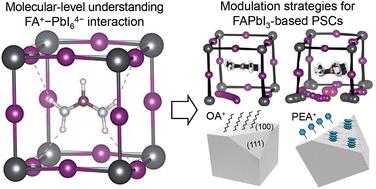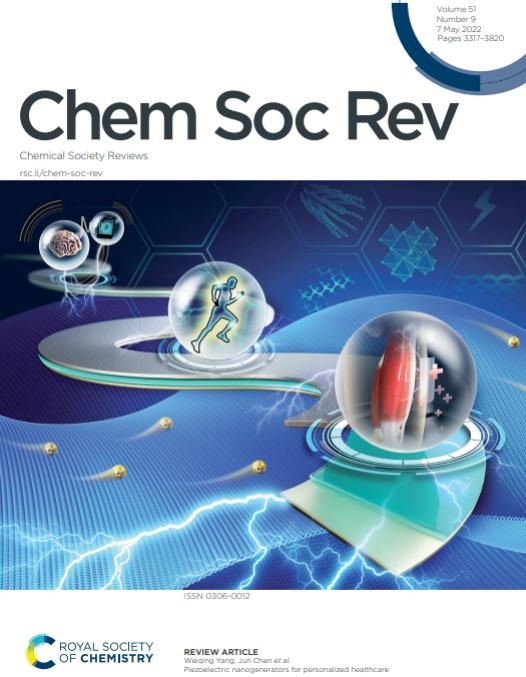Molecular-level understandings and device strategies for FAPbI3-based perovskite solar cells
IF 39
1区 化学
Q1 CHEMISTRY, MULTIDISCIPLINARY
引用次数: 0
Abstract
The composition of halide perovskite has rapidly changed from methylammonium lead triiodide (MAPbI3) to formamidinium lead triiodide (FAPbI3) to achieve high-performance solar cells with power conversion efficiencies of over 27%. FAPbI3 is well known for its suitable bandgap, closer to the ideal one, and improved stability under external stress. Nevertheless, the role of FA+ in determining the outstanding optoelectronic properties of FAPbI3, distinct from MAPbI3, is relatively less understood. In this review, the interaction between FA+ and PbI64− octahedral frameworks is investigated in comparison with MA+, which readily affects the chemical bonding nature of the inorganic framework and thus determines the optoelectronic properties and structural stability. Closely related to the fundamental understanding of FAPbI3, the progress of FAPbI3-based perovskite solar cells is discussed from a strategic point of view to resolve their metastable character and surface defect properties to provide insights into future research directions.

基于fapbi3的钙钛矿太阳能电池的分子水平理解和器件策略
卤化物钙钛矿的成分从三碘化甲基铅(MAPbI3)迅速转变为三碘化甲脒铅(FAPbI3),从而实现了功率转换效率超过27%的高性能太阳能电池。FAPbI3以其合适的带隙,更接近理想带隙,提高了在外应力下的稳定性而闻名。然而,FA+在决定FAPbI3不同于MAPbI3的突出光电特性中的作用,人们对其了解相对较少。本文研究了FA+与PbI64−八面体骨架之间的相互作用,并与MA+进行了比较,发现FA+与PbI64−八面体骨架之间的相互作用会影响无机骨架的化学键性质,从而决定其光电性能和结构稳定性。与对FAPbI3的基本认识密切相关的是,从战略的角度讨论了基于FAPbI3的钙钛矿太阳能电池的进展,以解决其亚稳特性和表面缺陷特性,为未来的研究方向提供见解。
本文章由计算机程序翻译,如有差异,请以英文原文为准。
求助全文
约1分钟内获得全文
求助全文
来源期刊

Chemical Society Reviews
化学-化学综合
CiteScore
80.80
自引率
1.10%
发文量
345
审稿时长
6.0 months
期刊介绍:
Chemical Society Reviews is published by: Royal Society of Chemistry.
Focus: Review articles on topics of current interest in chemistry;
Predecessors: Quarterly Reviews, Chemical Society (1947–1971);
Current title: Since 1971;
Impact factor: 60.615 (2021);
Themed issues: Occasional themed issues on new and emerging areas of research in the chemical sciences
 求助内容:
求助内容: 应助结果提醒方式:
应助结果提醒方式:


